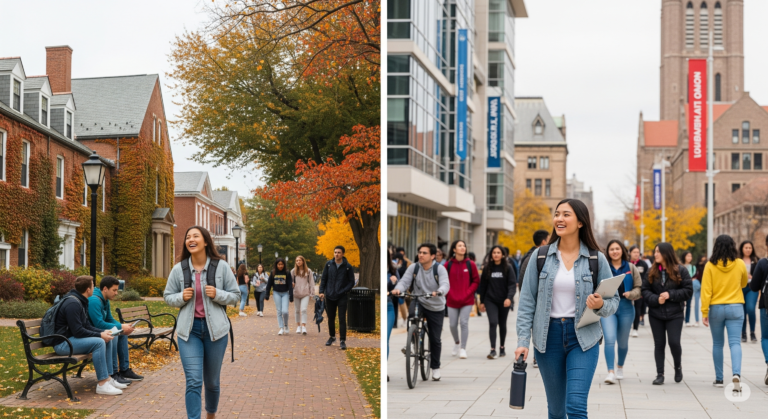TL;DR
- Small campuses (~under 5,000 students) offer tighter communities, easier professor access, and predictable routines—great for confidence and belonging early on.
- Big campuses (15,000–40,000+) offer breadth—more majors, niche clubs, research labs, and chances to “reboot” socially—if you have a plan to find smaller circles fast.
- Reserved students thrive where structure + predictability + gentle entry points exist: learning communities, peer mentoring, strong advising, and classes that encourage participation without the spotlight.
What “small” and “big” usually feel like
Small: under ~5,000 students | Medium: ~5,000–15,000 | Large: ~15,000–25,000 | Very large: 25,000+
These are helpful ranges, not rules. Focus on daily experience—class format, dorm vibe, and advising access—more than a number.
Side-by-side: key factors for reserved students
Factor |
Smaller Campuses |
Bigger Campuses |
|---|---|---|
|
Academic experience |
More seminars & discussion-based classes; professors know your name; easier to ask for help. |
Large lectures early, but small labs/discussions later; vast course and research options. |
|
Social environment |
Community forms quickly; fewer but broader clubs; reputation travels. |
Endless micro-communities; more niche clubs; anonymity until you opt in. |
|
Support systems |
One-stop advising; straightforward access to counseling and learning centers. |
Many services but fragmented; look for embedded supports (peer mentors, advisors per major). |
| Housing & daily life | Campus-centric, walkable, familiar faces. | Buses/shuttles, multiple dining halls, themed housing and quiet floors. |
| Logistics & opportunities | Fewer on-campus jobs but easier to land; strong faculty recs. | Abundant jobs, labs, alumni networks; more competition—apply early. |
Good signs anywhere: first-year seminars capped at ~15–20, assigned success coach + peer mentor, and Living-Learning Communities (LLCs) grouped by interest or major.
Quick fit tool: score your preferences
Give each statement 1–5 (1 = not me, 5 = very me).
Small-campus leaners
- I feel calmer when I recognize faces daily.
- I participate more in small, discussion-based classes.
- I want easy access to professors and advisors.
- I’d like campus to be walkable with fewer










